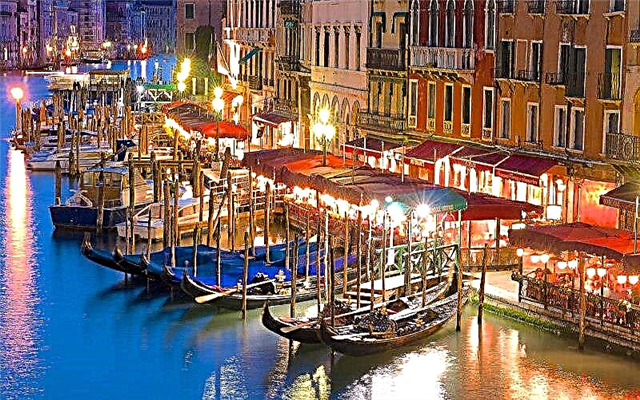The medieval fortress Funa is located on the territory of the Crimea peninsula. It is located to the southeast of the Demerdzhi mountain range, near the village of Luchistoye. From the Greek language "funa" is translated as "smoky".
The history of the appearance of a medieval fort
The first written evidence of the fortress is found in the annals of 1384. In those days, Funa was the southern outpost of the principality of Theodoro, one of the most powerful medieval states. When the principality gained power over the Crimean lands, its ruler issued a decree on the construction of several impressive fortresses. They should have been placed on rocky cliffs and hills, turning them into solid fortifications. The combination of these fortresses provided the principality with good protection from opponents. In addition, from these forts, the inhabitants of the principality could, if desired, attack neighboring cities.

Funa fortress model
The Funa fortress was a classic version of a medieval residential complex, which included a settlement, a fort and a burial ground, that is, a cemetery. They occupied an area of just over 0.5 hectares. In the Middle Ages, next to Funa, there was a trade route, along which goods from Aluston and Gorzuvit (modern resorts of Alushta and Gurzuf) were delivered to the north - to the Crimean steppes.

Bird's eye view of the ruins of the Funa fortress
Why did Prince Theodoro choose a place for a fortress at the foot of the majestic Demerdzhi mountain range? Historians believe that his choice was due to the passage of a busy road in this place. And the results of the study of the territory of the village itself led archaeologists to the idea that it appeared at the end of the X - beginning of the XI centuries. This period is considered a turning point for the Crimean peninsula, because it was then that these lands were freed from the rule of the Khazars.

Ruins of the Church of Theodore Stratilates in the Funa fortress
However, no matter how hard the scientists tried, the mysterious fortress Funa did not reveal all its secrets to them, and the descendants got only meager written sources telling about the life of the settlement. Due to the fact that the Funa fortress often turned out to be a place of clashes between the opposing sides, it was destroyed, but each time the fortifications were not only restored, but also strengthened.

View of the eastern side of the fortress
The turning point in the fortress's fate took place in 1475. Funa, unable to withstand the onslaught of the stubborn Ottoman Turks, was almost destroyed to the ground. They did not rebuild it again, although people lived near the ruins of the fortress for a rather long time. They left here only at the end of the 19th century, when giant boulders fell from the slopes of Demerdzhi into the valley. They can still be seen today.
Fearing that the terrible landslide might repeat itself, people moved down to the valley. Another natural disaster happened in the Crimea in 1927. A strong earthquake led to significant changes in the structure of the fortress - the formation of new cracks and destruction.

Entrance tower
Settlement layout
Of greatest interest to connoisseurs of architectural monuments on the territory of the ancient fortification are the old church and the remains of the fortifications. In the first half of the 19th century, traces of two large buildings and the entrance to the fortress were visible here. According to the famous researcher Pyotr Ivanovich Keppen, the author of the "Crimean Collection", at one time there was a tower on the east side of this entrance. The scientist also suggested that the purpose of erecting such a powerful fortification was the desire of the Theodorites to control the road passing through the Angarsk gorge. In addition, the observant Köppen noticed the orderly arrangement of all defensive fortifications.

Fortress Gate
The appearance of the settlement was recreated by archaeologists along the perimeter of the estates, the location of which was guessed in ancient ruins. From the central street there were small alleys, and in them there were houses with one or two rooms. The walls of the dwellings were thin, as they were erected from wild stone, combined with a solution of clay. The buildings were covered with tiles. Outbuildings were located close to each other in the courtyards. Surprisingly, scientists have not been able to find traces of the defensive fence protecting the settlement.
Cemetery and fortress churches
In the Middle Ages, in the central part of the burial ground, there was a cemetery church, more reminiscent of a chapel - its size was so small. The temple was 4.6 meters long and 3.2 meters wide. This miniature one-nave basilica received its parishioners from the 13th to the 15th centuries.

Forge
The fortress church is also represented by a one-nave basilica. It was used both as a religious building and as a bastion, that is, it was part of the defense system of the fortress. The single-apse fortress church had a cylindrical vault, and its keeled and pointed arches resembled an inverted ship bottom. The window structures of the temple were decorated with a carved ornament.
The size of the serf church was almost 3 times larger than the cemetery. It was 15 m long and a little over 10 m wide. All church services were held on the top floor. In this room, along the walls, there were small columns, crowned with capitals decorated with carved floral ornaments.

Fortress ruins
The church of the ancient fort could be accessed through two aisles. One of them led to the casemate on the first floor of the building, and the other, with steps, led to the temple room. Scientists believe that this church was built at the end of the XII - the beginning of the XIII century. Until the 15th century, the architectural design of the shrine did not undergo changes, but later the church was rebuilt, and it was slightly reduced.
Funa fortress burial ground
On a small hill on the northern side of the fortress, there is a cemetery, in the slab graves of which the inhabitants of the settlement are buried. All burials were lined with slate slabs, which were mounted on the bottom - the ground covered with a piece of cloth or felt. They are also covered from above by slabs - lime or slate.

Fortress defenders weapons
Single burials were rare here. Most of the slab graves contain the remains of 2-5 bodies. All the graves are oriented from east to west, and the deceased lie in them with their feet to the east, as Christian custom dictates. Since the inhabitants of the village of Funa professed Christianity, after their death their relatives did not put any objects in their graves. However, in some burials, researchers still found amulets, mugs and jugs. And this fact became a confirmation that some families in the settlement adhered to pre-Christian customs.
Archaeological finds
During archaeological excavations, researchers found many interesting artifacts in Funa, especially fragments of dishes and kitchen utensils. For the storage of liquids and bulk products and grain, the population of the serf settlement used pithos - tall capacious vessels resembling a spindle in shape. The pithos had a pointed bottom. They were decorated with ornaments-waves or "belts" made in the form of rollers and having indentations made by the fingers of the potters who sculpted the vessels. Pithos put either specially equipped niches, or buried the lower part in the ground.

Replica of a slab found during excavations at Funa Fortress
In addition to these huge vessels, archaeologists have found pottery with one handle, as well as glazed utensils that are covered with a layer of glass. A low-melting glass layer was attached to the clay when the ceramics underwent secondary firing. The sleek glass décor of the crockery was brown, green, and yellow.
An ancient fortress today
Today, only ruins remain of the once majestic Funa fortress. Most of its buildings were destroyed by landslides and boulders that rolled down the slopes of Demerdzhi. Part of the defensive complex has been reconstructed.

View of the ruins of the fortress buildings
A walk along the ruins of an ancient fort gives you the opportunity to feel its power and allows you to appreciate the work of ancient craftsmen who worked on the walls of the defensive bastion. Today, a plate with coats of arms is exhibited in the fortress, four of which belong to the princely families, and the fifth to the Byzantine Empire. In addition, an old wall fresco depicting a two-headed eagle has been preserved on the territory of the fortifications.
Attraction rating:











